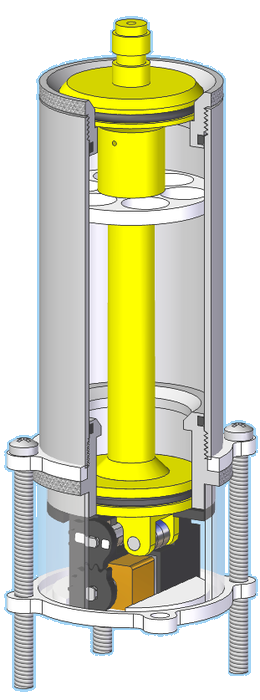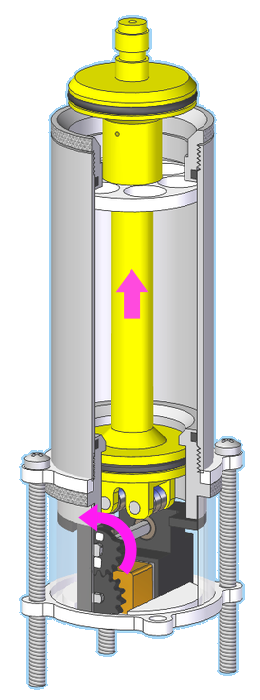Preparation:
Device is filled with pressurized CO2 or high pressure compressed air through the
paint ball style quick disconnect fitting on top which is passed through a check
valve into the main gas chamber.
Activation:
A voltage(1.5-12v) is passed to the geared motor in the base of the device which
(through some simple gearing) turns the main latch shaft. As this shaft is rotated
90deg, the latch will disengage and will allow the main load shaft & pistons to move
freely (axially). A piston is fixed to each end of the main load shaft to seal each
end of the gas chamber; however, the top piston is of a subtly larger diameter than
the bottom piston thereby creating a subtle force differential from the gas pressure.
Due to this force differential, the top piston has subtly more pull on the main shaft
than the base piston thereby pulling the complete main shaft upwards which beyond
a certain point will open the device’s gas contents for rapid release.
The dual piston arrangement allows the bulk of the load to be transferred to the
main load shaft (inside the gas chamber) thereby exposing minimal load to the actual
latch shaft mechanism to minimise dynamic stresses and thereby maximise mechanical
reliability.
A high throughput opening allows for instant gas release to maximise the power
from the available energy & in turn maximise deployment reliability.


